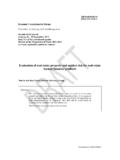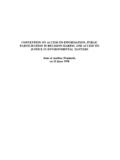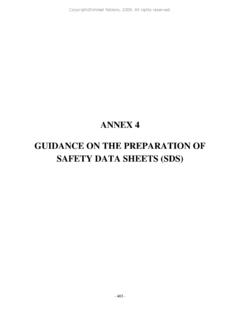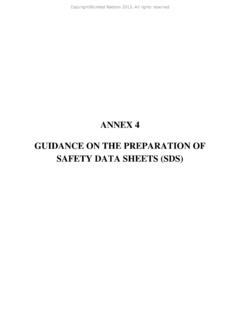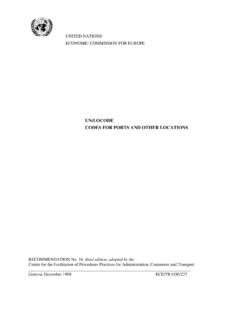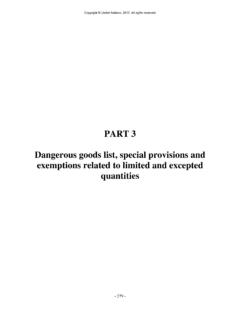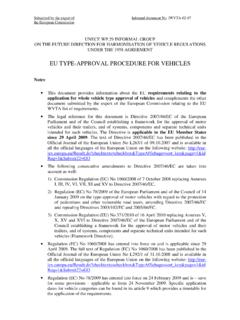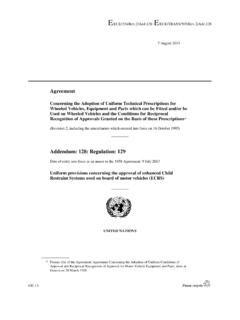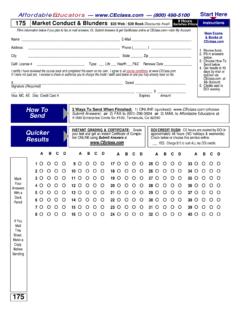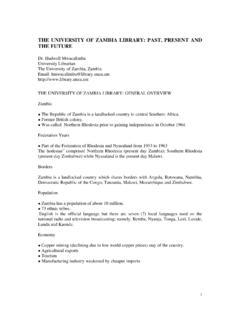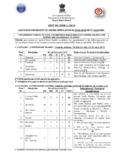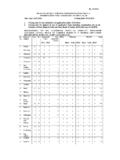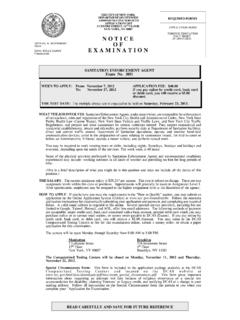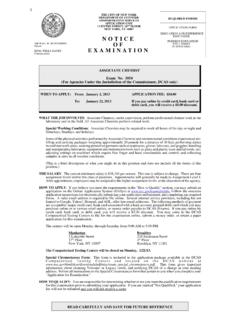Transcription of ANNEX 7 - UNECE Homepage
1 - 331 - ANNEX 7 AN EXAMPLE OF CLASSIFICATION IN THE GLOBALLY HARMONIZED SYSTEM - 333 - ANNEX 7 AN EXAMPLE OF CLASSIFICATION IN THE GLOBALLY HARMONIZED SYSTEM Classification proposal The following classification proposal draws on the GHS criteria. The document includes both brief statements about the proposal for each health hazard class and details of all the available scientific evidence. Classification is proposed for both the acute toxicity and the corrosivity of this substance based on standard and non-standard animal studies.
2 Proposed classification GHS: Acute oral toxicity Category 4 Acute dermal (skin) toxicity Category 3 Skin irritation/corrosion Category 1C Eye irritation/serious eye damage Category 1 Flammable liquid Category 4 Identification of the substance EINECS Name If not in EINECS IUPAC Name Globalene Hazexyl Systemol CAS No. 999-99-9 EINECS No. 222-222-2 Synonyms (state ISO name if available) 2-Hazanol Globalethylene Molecular formula CxHyOz Structural formula Purity (w/w) Significant impurities or additives Known uses Industrial: Solvent for surface coatings and cleaning solutions.
3 Chemical intermediate for Globalexyl UNoxy ILOate. General public: Toilet cleaner - 334 - Physico-chemical characteristics Classification as a category 4 flammable liquid is proposed for the physico-chemical endpoints. Physical form Liquid Molecular weight Melting point/range ( C) -45 Initial Boiling point/ boiling range ( C) Decomposition temperature Vapour pressure (Pa( C)) 7 Relative density (g/cm3) - Vapour density (air = 1) Fat solubility (mg/kg, C) Water solubility (mg/kg, C) Slightly soluble ( w/w) Partition coefficient (log Pow)
4 Flammability flash point ( C) explosivity limits (%,v/v) auto-flammability temp. ( C) closed cup: open cup: lower limit: upper limit: Explosivity No data available Oxidising properties Other physico-chemical properties - 335 - Health and environmental characteristics Acute toxicity Oral Classification under GHS Category 4 (300-2000 mg/kg) are justified. Species LD50 (mg/kg) Observations and remarks Ref.
5 Rat 1480 No further details were available. 2 Rat 1500 (males ) 740 (females) The LD50 values in mg/kg were calculated from ml/kg using the known density for EGHE of g/cm3. 8 Inhalation There were no deaths or signs of overt toxicity in animals exposed to the saturated vapour concentration of approximately mg/L and therefore, the available data do not support classification. Species LC50 (mg/l) Exposure time (h) Observations and remarks Ref. Rat > 83 ppm. (approx equal to mg/l). 4 No deaths, clinical signs or gross lesions occurred at 83 ppm (85 ppm is stated to be the saturated vapour concentration at room temperature).
6 3 Rat Not stated 6 The animals were exposed to the saturated vapour concentration at room temperature (assumed to be 85 ppm). No deaths occurred and no signs of gross pathology were observed. 8 Rat Not stated 8 No deaths occurred with exposure to the saturated vapour concentration at room temperature (assumed to be 85 ppm). 2 - 336 - Skin Classification under GHS Category 3 (200-1000 mg/kg) is justified. Species LD50 (mg/kg) Observations and remarks Ref. Rat 790 No further details were available.
7 2 Rabbit (5/sex/ group) 720 (males) 830 (females) Animals were exposed to up to 3560 mg/kg for 24 hours. All but 2 of the animals that died did so during the application period. Following the exposure period, local toxicity (erythema, oedema, necrosis and ecchymoses) was reported in an unstated number of animals, and persisted throughout the 14 day post-application observation period. Ulceration was also noted in an unstated number of animals at the end of the observation period. 8 Skin irritation/corrosion There are conflicting reports concerning the irritant nature of this substance.
8 In a dedicated skin irritation study reported in the same paper as the acute dermal study, the author states that necrosis was observed in 3 of 6 treated rabbits which was still present on the last day of observation (day 7), along with mild to moderate erythema. Mild to marked oedema was also observed during the course of the study but had resolved within the 7-day observation period. Given that one animal showed no evidence of any skin response in this study and that only slight to moderate skin irritation was observed in the other animals the observation of necrosis in three of the animals is somewhat surprising.
9 An acute dermal (skin) toxicity study in rabbits also reported signs of skin irritation including the description 'necrosis' and ulceration but did not quantify the number of animals affected. In contrast to these findings, an old and briefly reported study indicated that there was little or no indication of skin irritation in rabbits. Similarly mixed skin irritation findings have been observed with a closely related substance, for which both necrosis and no skin irritation has been reported. In addition a secondary source indicates that some other similar substances cause 'moderate' skin irritation, and that prolonged exposure to these group of substances may cause burns.
10 However, much shorter chain similar substances are not considered to be skin irritants. It was considered that the reported necrosis in both the acute dermal and skin irritation studies cannot be dismissed and, taken together with the findings seen with structurally similar substances, this justifies classification. There are 3 Categories under the GHS for classification as corrosive. The data do not match the criteria readily, but Category 1C would be appropriate since the necrotic lesions observed occurred after an exposure period of 4 hours.

